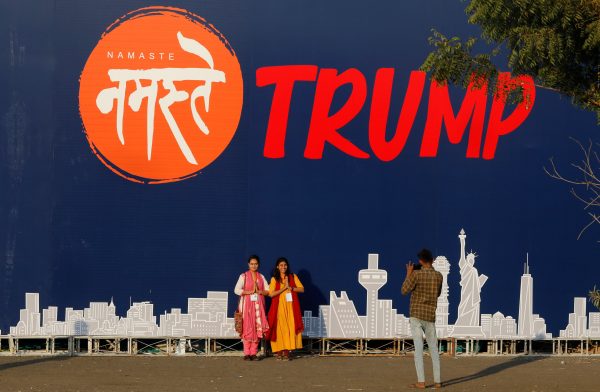While optics are useful signalling mechanisms, the future of US–India relations depends on committing to progress on the next set of major deliverables.
The US–India defence relationship has advanced tremendously. Both have signed all but one of the military ‘enabling’ or ‘foundational’ agreements, with the last, the Basic Exchange and Cooperation Agreement (BECA), expected to be initialled soon. The United States under Trump has also granted India special trade status for high-end defence technology on a par with traditional allies and launched a new tri-services exercise, entrenching the United States as India’s biggest partner for joint military exercises.
But the two countries have traversed a rockier road when it comes to trade. Trump’s focus on trade deficits has made India a target through his term. The United States increased tariffs on Indian steel and aluminium and revoked benefits under the Generalized System of Preferences (GSP). India too has taken its share of protectionist measures: introducing price caps on medical devices, steadily increasing tariffs since 2018, hitting back at the revocation of GSP benefits by raising tariffs further, and announcing new regulations for e-commerce.
Despite the protectionist blows, bilateral goods trade grew 5 per cent in 2019, hitting a record of US$92 billion. Trade representatives from both sides, who have been negotiating a deal since 2018, have been unable to resolve their differences despite coming close when Modi visited the United States in September 2019. This next summit is an opportunity to resolve trade issues before they spill over and affect the wider relationship.
In the lead-up to Trump’s arrival, both emphasised optics rather than substance. An announcement on trade is no longer expected. There are no major new defence initiatives on the agenda either.
Instead, Modi is hosting a ‘Namaste Trump’ event. Set to be held at India’s newly constructed cricket stadium in Motera, Ahmedabad, it’s aimed at paralleling ‘Howdy Modi!’ back when Modi visited Texas in 2019.
That is not to say that the upcoming summit is entirely devoid of substance. India has announced purchases of Apache and Seahawk helicopters. Nor is it to say the optics are unimportant, as they can be useful signalling mechanisms to partners and adversaries in the region. But forward momentum will only come through deep consideration of how to tackle the major issues.
In defence, as the United States and India have made the ‘Indo-Pacific’ a centrepiece of their geopolitical strategy, one way to further operationalise cooperation is to focus on building capacity in Indian Ocean states. The United States and India could launch an Indian Ocean Cooperation and Training exercise, along the lines of the Southeast Asia Cooperation and Training exercise. The focus would be on strengthening the capabilities of Indian Ocean states to combat regional issues such as piracy, trafficking and terrorism, creating synergies between India’s ‘Security and Growth For All’ (SAGAR) doctrine and US emphasis on playing a bigger role from ‘California to Kilimanjaro’.
On trade, the inability of the United States and India to reach even a small deal underscores how the current framework to work through issues is not working. A Trade Policy Forum hasn’t been held since 2017. Both countries have turned their noses up at regional agreements such as the Trans-Pacific Partnership and the Regional Comprehensive Economic Partnership. An annual 2+2 dialogue, similar to the defence and foreign ministers dialogue, could incentivise both to synchronise key economic and trade deliverables and create space to share views on not just bilateral but regional and global issues in trade, emerging technology and data protection.
Both countries need to think harder about new ideas to drive the relationship forward. Substantive engagements have been the force behind the United States and India overcoming ‘hesitations of history’ and will similarly push both to overcome the predicaments of the present.
Aman Thakker is Adjunct Fellow with the Wadhwani Chair in US–India Policy Studies at the Center for Strategic and International Studies (CSIS) and JB and Maurice C Shapiro Scholar at the University of Oxford.

